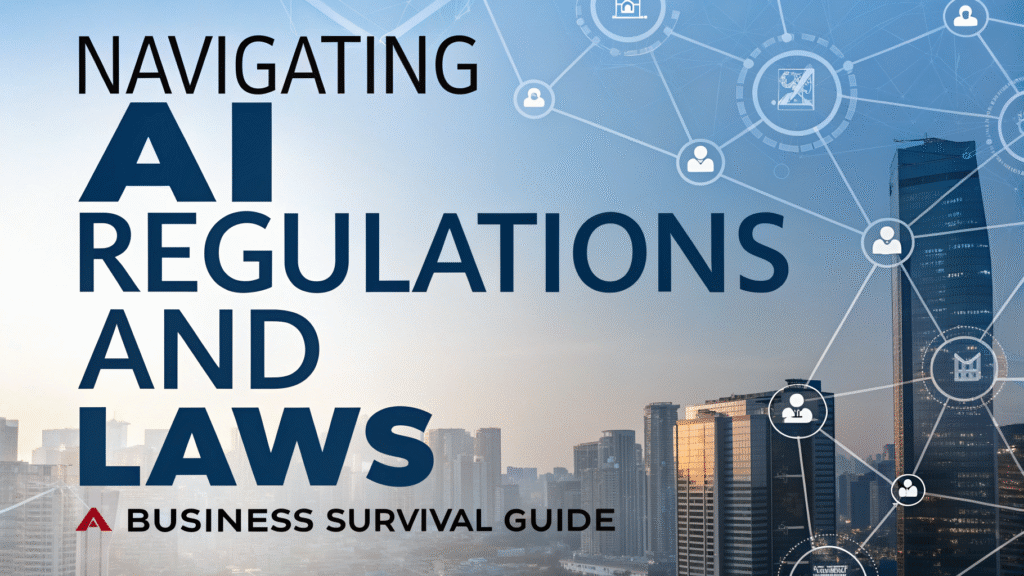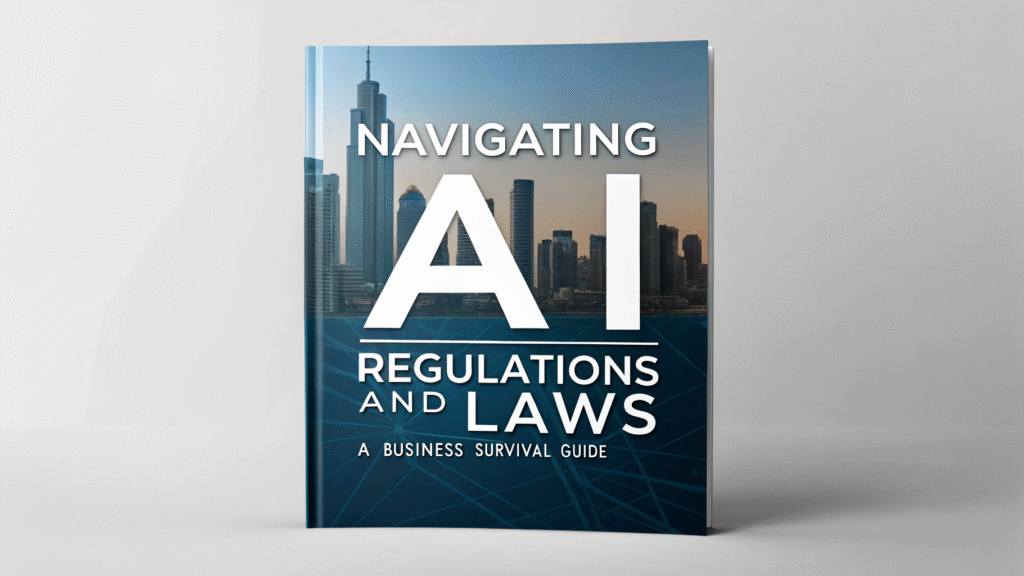
Introduction
Artificial Intelligence is reshaping industries at a breathtaking pace, but a new landscape is emerging alongside it: the world of AI regulations and laws. For entrepreneurs and creators, what once felt like the wild west is rapidly becoming a regulated environment. Understanding these legal frameworks is no longer optional; it’s critical for risk management, ethical operation, and maintaining a competitive advantage. This guide demystifies the complex global patchwork of AI regulations and laws and provides a practical roadmap for compliance.
A Brief History of AI Governance
The journey toward formal AI regulations and laws began with foundational principles. Initially, governance was guided by ethical codes from research institutions and tech companies, focusing on concepts like fairness and transparency. However, as AI’s impact grew, so did the call for legal enforcement. The 2020s marked a turning point, with the European Union taking a leading role with its pioneering AI Act. This spurred a wave of legislative proposals worldwide, from the U.S. Blueprint for an AI Bill of Rights to China’s targeted regulations on algorithmic recommendation systems, transforming abstract ethics into binding law.
Who is Impacted by AI Legislation?
The reach of AI regulations and laws is vast, affecting a wide range of stakeholders:
- Tech Companies & Developers: Are directly responsible for building compliant AI systems, conducting risk assessments, and ensuring data governance.
- Business Users of AI: Companies that integrate third-party AI tools into their operations (e.g., for HR, marketing, or customer service) must ensure their use complies with relevant laws.
- Marketers & Content Creators: Must understand rules around data privacy, disclosure (e.g., labeling AI-generated content), and avoiding algorithmic bias in targeted advertising.
- Entrepreneurs & Startups: Need to build compliance into their business models from the ground up to ensure scalability and attract investment.
- Consumers & the General Public: Are the ultimate beneficiaries, granted new rights and protections against unfair or unsafe AI applications.
Key Features of Major Regulatory Frameworks
While regulations differ, several core pillars are emerging as global standards.
- Risk-Based Classification: Many laws, like the EU AI Act, categorize AI systems by risk level—from unacceptable (e.g., social scoring) to high-risk (e.g., medical devices) to limited risk—with corresponding obligations.
- Transparency and Explainability: Regulations often mandate that AI systems be transparent in their operation and that their decisions can be explained to users, especially when negatively impacted.
- Data Governance and Privacy: Strong links exist between AI regulations and laws and existing data protection rules like GDPR, emphasizing lawful data collection and processing.
- Human Oversight: A requirement for human intervention in high-stakes AI decision-making processes is a common feature to prevent automated harm.
- Accountability and Auditing: Companies must demonstrate compliance through documentation, risk management systems, and, in some cases, independent audits.
The Business Case for Proactive Compliance
Viewing AI regulations and laws as a burden is a missed opportunity. Proactive compliance offers tangible benefits:
- Builds Trust and Brand Reputation: Demonstrating a commitment to ethical AI is a powerful differentiator that builds customer loyalty.
- Mitigates Financial and Legal Risk: Avoid potentially massive fines and legal battles associated with non-compliance.
- Enhances Investor Appeal: Investors are increasingly prioritizing ESG (Environmental, Social, and Governance) factors, and robust AI governance is a key component.
- Improves Product Quality: The processes required for compliance—like rigorous testing and bias checks—often lead to more robust, reliable, and fairer AI systems.
- Facilitates Global Market Access: Understanding international AI regulations and laws is essential for businesses looking to scale across borders without encountering regulatory roadblocks.
Best Practices for Staying Compliant
Navigating this new terrain requires a strategic approach. Here are actionable steps your business can take today.
- 1. Conduct an AI Audit: Start by cataloging every way your company develops or uses AI. You cannot manage what you don’t measure.
- 2. Appoint an AI Governance Lead: Designate a person or team responsible for monitoring legal developments and implementing internal policies.
- 3. Implement a Robust Data Strategy: Ensure your data collection, storage, and processing practices are transparent and compliant with privacy laws, as data is the foundation of AI.
- 4. Prioritize Transparency with Users: Be clear when AI is being used, especially in customer-facing applications. Simple disclosures can build trust and meet regulatory requirements.
- 5. Develop Internal Ethical Guidelines: Create a company-wide policy on the responsible use of AI that goes beyond the legal minimums.
- 6. Stay Informed: The field of AI regulations and laws is fluid. Subscribe to legal updates, join industry groups, and consider consulting with legal experts specializing in technology law.
Challenges and Limitations in Regulation
The path to effective AI governance is fraught with difficulties.
- The Pace of Technological Change: Laws struggle to keep up with the rapid evolution of AI, often risking obsolescence upon enactment.
- Global Fragmentation: Differing regulations across countries create a complex compliance landscape for international businesses.
- The Innovation vs. Regulation Tension: Overly restrictive laws could stifle innovation, while overly lax ones fail to protect the public.
- Enforcement Difficulties: Monitoring and enforcing compliance across millions of AI applications is a monumental challenge for regulators.
The Future Outlook for AI Law
The regulatory environment will continue to evolve in several key directions.
- Greater Harmonization: Expect to see increased efforts to align standards between major economic blocs to simplify global commerce.
- Sector-Specific Regulations: We will likely see more targeted laws for specific industries like healthcare, finance, and autonomous vehicles.
- Focus on Generative AI: Laws will specifically address the unique challenges posed by large generative models, including copyright, disinformation, and content provenance.
- Automated Compliance Tools: The rise of “RegTech” will see AI tools being used to help companies monitor and ensure their own compliance with AI regulations and laws.

Conclusion
The era of unregulated AI is coming to a close. The emerging framework of AI regulations and laws is not a barrier but a necessary foundation for building a sustainable, trustworthy, and innovative AI-powered future. By embracing compliance proactively, businesses can mitigate risks, earn the trust of their customers, and position themselves as leaders in the new digital economy. The time to understand and adapt is now.